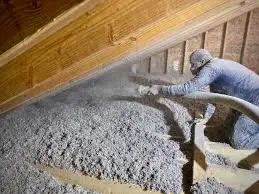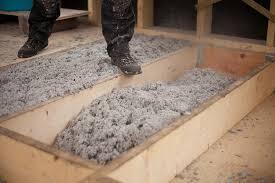Proper insulation is crucial for maintaining a comfortable and energy-efficient home. One of the most popular insulation methods is blow-in insulation, known for its effectiveness and ease of installation. This blog post will explore the costs associated with blow-in insulation, helping homeowners understand what to expect and how to budget for this important home improvement.
Understanding Blow In Insulation

What is Blow In Insulation?
Blow-in insulation, also known as loose-fill insulation, involves blowing small particles of insulation material into the walls, attics, or floors using specialized equipment. This method ensures that the insulation fills all the gaps and crevices, providing excellent coverage and improving the home’s thermal performance.
Types of Blow In Insulation
There are different types of blow-in insulation materials, including cellulose, fiberglass, and mineral wool. Each type has its own benefits and costs, with cellulose being made from recycled paper, fiberglass from glass fibers, and mineral wool from natural rock or slag.
Factors Influencing Blow In Insulation Cost
Material Choice
The type of material you choose significantly affects the overall cost. Cellulose tends to be the most affordable option, while fiberglass and mineral wool are generally more expensive due to their higher R-values and better moisture resistance.
Installation Area
The area that needs insulation, such as walls, attics, or floors, will impact the total cost. Attic insulation cost, for example, can vary depending on the size and accessibility of the attic.
Labor Costs
Labor costs can vary depending on the complexity of the installation and the rates charged by local contractors. It is often worth getting multiple quotes to ensure you receive a fair price for the installation.
Blow In Insulation Cost Breakdown

Blown In Insulation Pricing
Blown in insulation pricing can vary widely based on the factors mentioned above. On average, homeowners can expect to pay between $1.00 and $2.50 per square foot for materials and installation. This means that insulating a 1,000 square foot area could cost between $1,000 and $2,500.
How Much Does Blow In Insulation Cost?
To get a more precise answer to the question, “how much does blow in insulation cost?” homeowners should consider the specific details of their project, including the type of insulation, the size of the area, and the labor involved. Obtaining quotes from multiple contractors can provide a clearer picture of the potential expenses.
Comparing Blow In Insulation to Other Methods
Spray Foam Insulation Cost for 1000 sq ft
Another popular insulation method is spray foam insulation, known for its superior air sealing properties. However, it tends to be more expensive than blow-in insulation. The spray foam insulation cost for 1000 sq ft typically ranges from $1,500 to $3,000, making it a pricier option compared to blow-in insulation.
Cost to Insulate Attic
The cost to insulate attic with blow-in insulation is generally lower than using spray foam. For a typical attic space, homeowners can expect to pay between $1,000 and $2,000 for blow-in insulation, depending on the factors discussed earlier.
Budgeting for Blown Insulation: What to Expect in Costs

When budgeting for blown insulation, it’s important to consider all the potential costs involved. This includes the cost of materials, labor, and any additional expenses such as removing old insulation or making necessary repairs to the insulation area. By planning ahead and obtaining detailed quotes, homeowners can ensure they have a clear understanding of the financial commitment required for this home improvement project.
Purchasing Insulation for Sale
Finding Deals on Insulation Materials
Homeowners looking to save money on their insulation project can explore options for insulation for sale. Many home improvement stores and suppliers offer discounts on bulk purchases or during seasonal sales. Additionally, some energy efficiency programs provide rebates or incentives for upgrading home insulation, which can help offset the costs.
Professional vs. DIY Installation
While DIY installation can save on labor costs, it is important to ensure that the job is done correctly to avoid potential issues down the line. Professional installation guarantees that the insulation is properly installed and can provide peace of mind that the job meets all safety and performance standards.
Conclusion
Blow-in insulation is an effective and economical way to improve your home’s energy efficiency and comfort. Understanding the costs involved, from material choices to labor expenses, helps homeowners make informed decisions and budget appropriately for their insulation projects. Whether you opt for professional installation or a DIY approach, ensuring your home is well-insulated will lead to long-term savings and a more comfortable living environment. For more information on insulation options and costs, consult with a local insulation expert or contractor.
